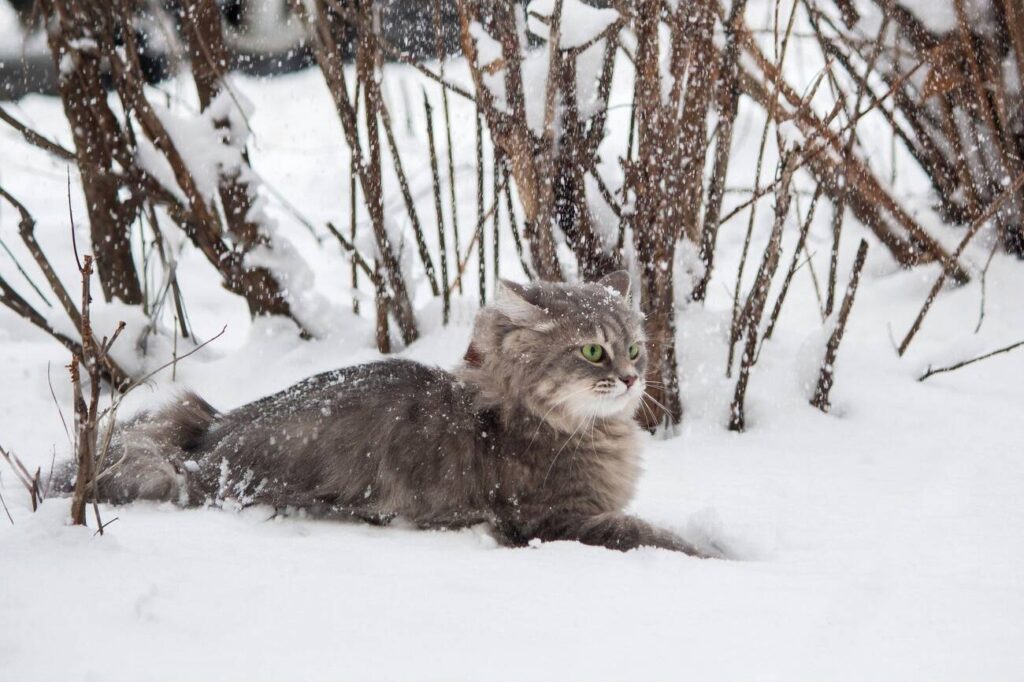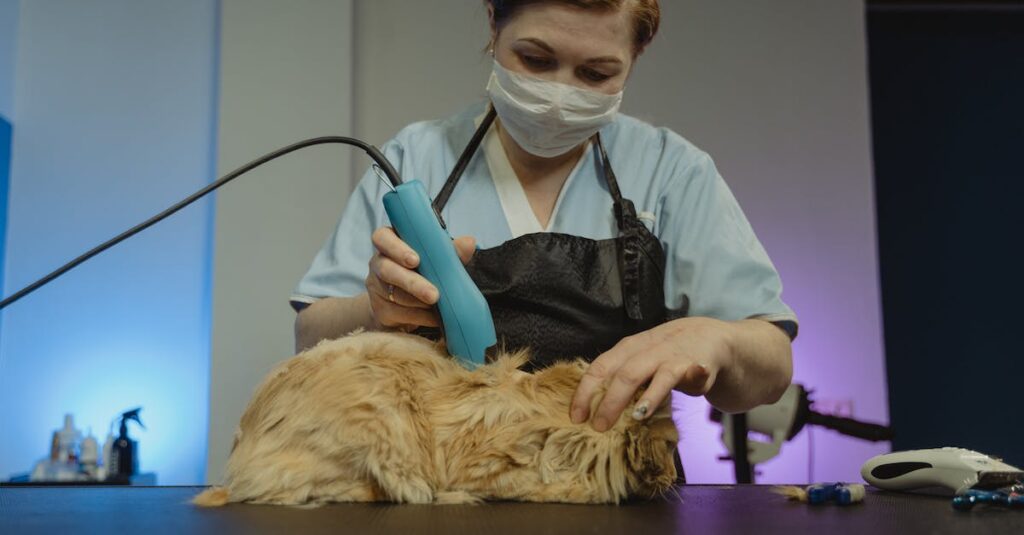
When winter rolls in and Arctic winds sweep across the UK, many of us bundle up in our warmest coats. But what about our pets? Winter can be particularly tough on cats, especially in areas with harsh, cold conditions. RSPCA has reported that the lives of many animals, including our beloved cats, are at risk during the colder months. As the days get shorter and the temperatures drop, it’s important to give your feline friend extra care to keep them warm, healthy, and happy.
In this friendly guide, we’ll share essential tips for winter cat care, including how to keep your cat warm, adjust their diet, and ensure they stay active and safe.
Keep Your Cat Warm Indoors
The most important step in winter cat care is ensuring your cat stays cozy and comfortable indoors. While their fur provides some insulation, cats are still susceptible to cold weather. Here are some tips to keep your cat warm:
- Create Warm Spaces: Set up cozy areas in your home with soft blankets, heated catbeds, or a sunny spot by the window for them to rest. Avoid placing your cat’s bed near drafty windows or doors. At catlives store we have affordable cat beds comfortable for your cats during winter.
- Monitor the Temperature: Keep your home’s temperature between 20 and 24°C (68 and 75°F) to ensure your cat is comfortable. For more tips on keeping your cat cozy, check out our blog on Keeping Your Cat Comfortable.
Adjust Their Diet for Winter
Cats require more energy in cold environments to stay warm, so adjusting their diet during the winter months is important. If your cat spends time outdoors, make sure to provide more frequent meals and keep an eye on their water bowl to ensure it doesn’t freeze. Using heated bowls can be helpful, or you can regularly change their water to keep it fresh.
For indoor cats, you may need to adjust portion sizes if they are less active in winter to prevent weight gain. If you are not sure on how to do this, check out our previous article on how to manage your cat weight
Protect Their Paws
Your cat’s paws may suffer from cold weather, particularly if they are wandering outside on snow, ice, or salt from the roads. Excessive cold can break paws, and road salt might irritate them. If your cat goes outside, be sure to clean their paws to get rid of any salt, ice, or snow when they get back inside. To keep your cat’s paw pads hydrated and free of cracks, use coconut oil or paw balm approved for pets. This will lessen the chance of pain and harm. If your cat spends more time indoors during the winter, there’s a chance that they may snag on carpets or blankets. This may be prevented by keeping their nails trimmed.
Increase Indoor Playtime
Although there may be less outdoor activity during the winter, your cat still needs to exercise. If cats aren’t given enough mental and physical stimulation, they may grow fat and feel bored. Treat-dispensing toys, feather wands, and laser pointers are a few examples of interactive toys that will keep your cat busy. Encouraging climbing and stretching with cat trees and scratching posts, can help them burn off surplus energy indoors. At Catlives store we provide you with essential tools to keep your cat busy indoors.
Keep Outdoor Cats Safe
Outdoor cats face unique challenges during winter, especially in colder climates like the UK. Here’s how to ensure your outdoor cat stays safe:
Watch Out for Antifreeze
Antifreeze, often used in car radiators, contains ethylene glycol, a substance highly toxic to cats. Be cautious of any spills and clean them up immediately. You can read more about the dangers of antifreeze on International cat care. If your cat spends time outdoors during the winter, Ensure there are no antifreeze spills in areas where your cat roams, and clean up any spills immediately.
Dangers with Hypothermia
While cats are resilient, they can still suffer from hypothermia if exposed to extreme cold for too long. Symptoms include shivering, lethargy, and shallow breathing. In the United States, the veterinary literature usually determines the threshold temperature for severe hypothermia to be any level below 30 degrees. If you suspect your cat is experiencing hypothermia, wrap them in a warm blanket and seek veterinary care right away.

In conclusion, your cat needs extra care throughout the winter months to stay warm, safe, and healthy. You can make sure your cat has as much fun in the winter as they do in the other months by giving them warm places to hang out, changing their food, keeping them occupied indoors, and covering their paws. Whether your cat prefers to cuddle indoors or go on outdoor adventures, giving them a little extra attention throughout the cold months will keep them content and happy.
For more tips on keeping your cat safe and warm this winter, visit our cat store. We offer a variety of products designed to help your cat brave the cold while staying comfortable and healthy.
Frequently Asked Questions (FAQ)
How can I tell if my cat is too cold indoors?
Cats are generally good at finding warm spots, but if you notice your cat shivering, seeking warmth near radiators, or curling up excessively in blankets, they might be too cold. Make sure to provide cozy areas with blankets, heated beds, or safe places near heat sources. For more tips on cat bedding options, visit our Cat Comfort Products.
Should I change my cat’s diet during the winter?
Yes, especially if your cat spends time outdoors. Cats need more energy in colder environments to maintain their body temperature, so providing extra food or more frequent meals can be beneficial.
Can cats get hypothermia?
Yes, especially if they are exposed to freezing temperatures for extended periods.
How do I keep my outdoor cat warm during winter
Outdoor cats need extra protection during winter. Provide them with a well-insulated outdoor shelter and ensure they have access to fresh, unfrozen water. Check out our previous article on the best outdoor shelter for our feline friend.
Are heated cat beds safe to use?
Yes, as long as they are designed for pets and used according to the manufacturer’s instructions. Be sure to check the temperature regularly to ensure it’s not too hot. For more on cat bedding options, visit our Cat Comfort Products.
References:
- International Cat Care (2020)
- Royal Society for the Prevention of Cruelty to Animals (RSPCA)



